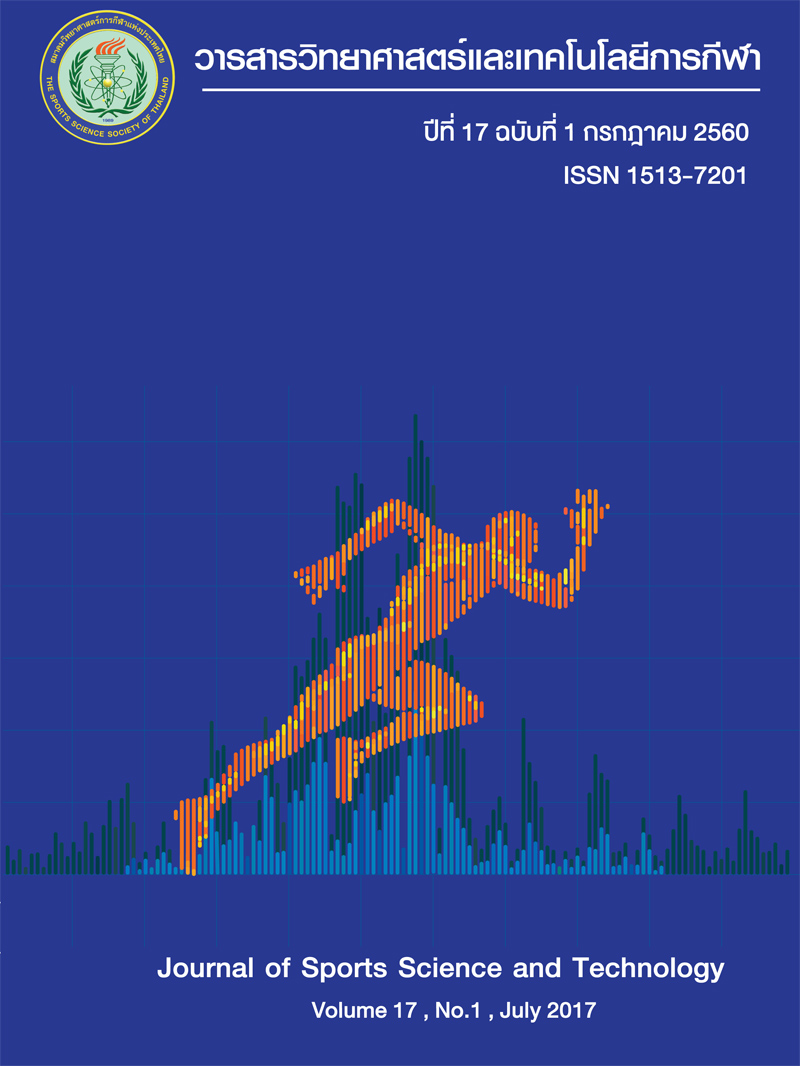BALANCE IN BLIND ATHLETIC CHILDREN WITH SINGLE LEG STAND TEST
บทคัดย่อ
Exercise training results in better control of balance in normal children. The purpose of this study was to determine the balance ability in blind athlete children. The 60 volunteers were the blind-boys aged 8-12 years old and their normal BMI= 14.5-18 kg/m2. They are arranged into 2 groups equally; blind without exercise group and blind children who are the global players and athletic group. The volunteers will be evaluated for their ability to maintain balance by single leg stand test and give information about the physical activity or exercise questionnaire. The data was analyzed using the unpaired t-test for comparing the difference of balancing time between groups. The results showed that their time for balance stability in the athletic blind-children longer than in the non-athletes blind-children (40.10 +19.16 seconds, and 11.34 + 9.31 seconds, respectively) with statistical significance (p<0.05). It can be concluded that balance in the athletes blind-children better than thatin the non-athletes blind-children. Then the way to improve the balance activity in the blind is to encourage them to do exercise or physical activity regularly.
Keywords: Blind children / Balance activity / Exercise
ดาวน์โหลด
ไฟล์ประกอบ
เผยแพร่แล้ว
2017-07-03
รูปแบบการอ้างอิง
1.
Rakpongsiri K, RAEKASIN A, CHOKPRASIT P. BALANCE IN BLIND ATHLETIC CHILDREN WITH SINGLE LEG STAND TEST. J Sports Sci Technol [อินเทอร์เน็ต]. 3 กรกฎาคม 2017 [อ้างถึง 8 ธันวาคม 2025];17(1):37-44. available at: https://he01.tci-thaijo.org/index.php/JSST/article/view/78647
ฉบับ
ประเภทบทความ
Sports Coaching Science






